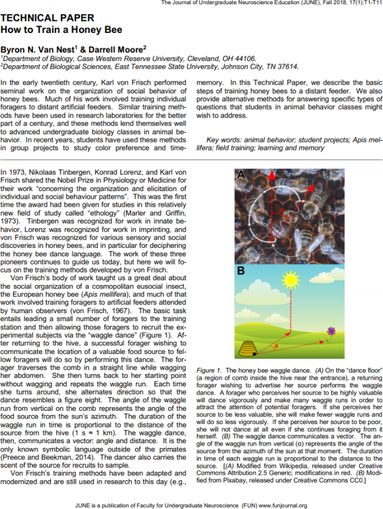I started as a new Assistant Professor in the Biological Sciences Department at the University of Manitoba. I'll have lab space soon and will be recruiting research students soon after that. If you are interested in studying how brains produce behaviour, and are interested in working with invertebrates, email me!
"How to train a honey bee" - Van Nest and Moore (2018) J Undergrad Neurosci Educ 17: T1-T11
|


